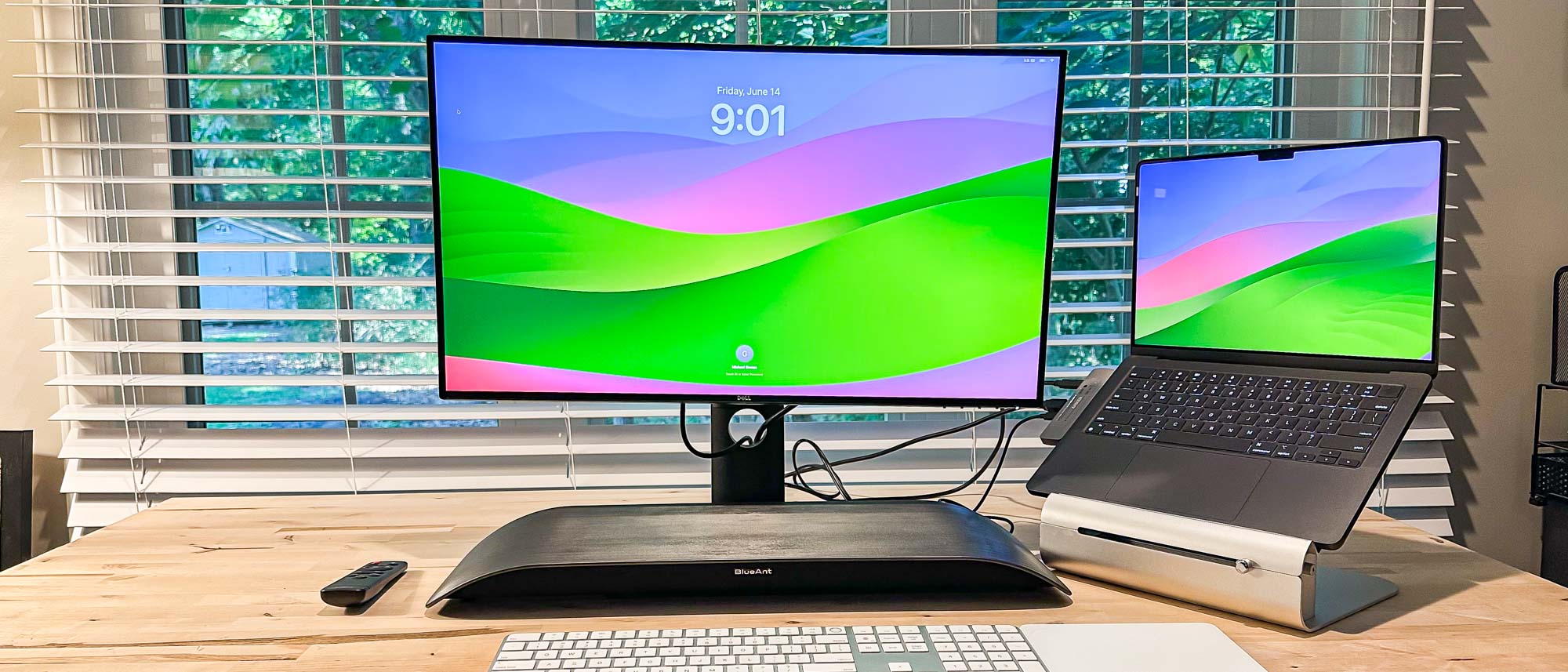Tom's Guide Verdict
With its under-monitor design, the BlueAnt Soundblade improves the experience of watching movies and playing games at your desk. It produces a wide sound with good bass and easy-to-hear voices, but the sound lacks detail overall.
Pros
- +
Wide sound
- +
Good bass without a separate subwoofer
- +
Resonant voices
Cons
- -
Large footprint
- -
Sound lacks detail
Why you can trust Tom's Guide
Price: $199 / AU$299 (approx. £157)
Colors: Charcoal, white, blue, green, pink
Configuration: 2.1
Drivers: Two 0.8 x 3.3-inch drivers, one 3.1-inch woofer
Power output: 120W RMS total
Inputs: Bluetooth 5.3 wireless, USB-C port, 3.5mm jack
Headphone jack: No
Size: 23 x 8.58 x 2.13 inches
If you’re looking for a space-saving speaker setup for your desktop, the BlueAnt Soundblade under-monitor soundbar could be for you. Instead of two satellite speakers and a subwoofer, the Soundblade is a single soundbar with built-in subwoofer that slips under the monitor screen.
If you're unfamiliar with BlueAnt — don't worry, we hadn't heard about the company either until the Soundblade arrived — the Australian maker has a strong line in Bluetooth speakers, wireless headphones and earbuds, as well as USB mics.
The Soundblade looks very different to the majority of the best computer speakers we've tested. As the name suggests, it's a thin slither of a speaker system even when compared to the smallest soundbars. Most importantly though, it sounds good, especially if you’re focused on watching movies and games at your desktop.
The price may be a bit more expensive than many traditional desktop speaker systems with comparable sound, but the slimline design fits under a desktop monitor screen and is far more slender than many of the best cheap soundbars.
Is the BlueAnt Soundblade a good match for your desktop? Read my review to find out.
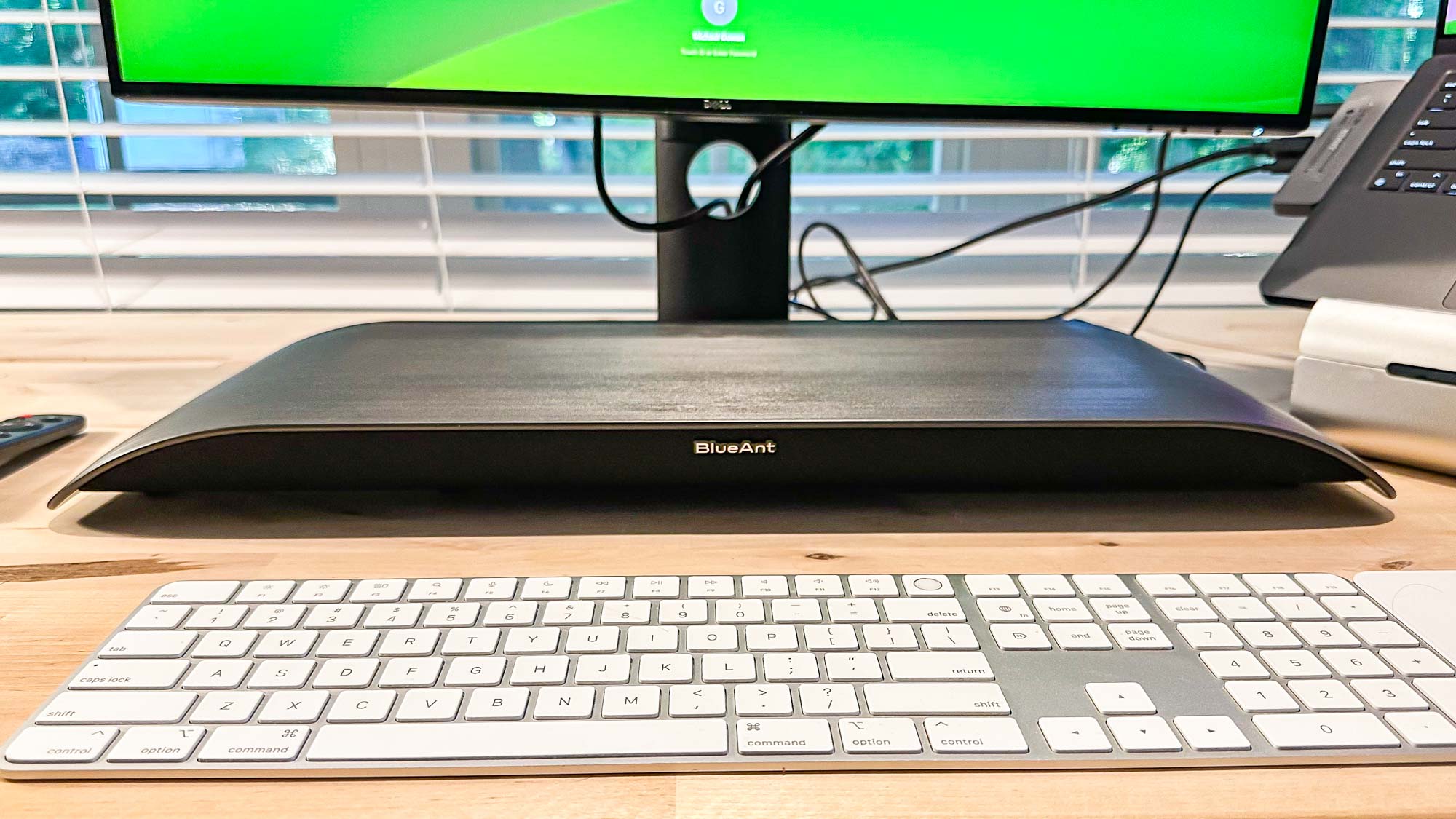
BlueAnt Soundblade review: Price and availability
- On sale at $199 / AU$299
- Available in charcoal, white, blue, green and pink color options
Released in early 2024, the Soundblade is available for $199 / AU$299 through Amazon in a rainbow of colors including charcoal, white, blue, green, and pink. Best Buy has the Soundblade at the same price in charcoal and white only. At the time of writing, it wasn't available in the U.K.
BlueAnt Soundblade review: Design
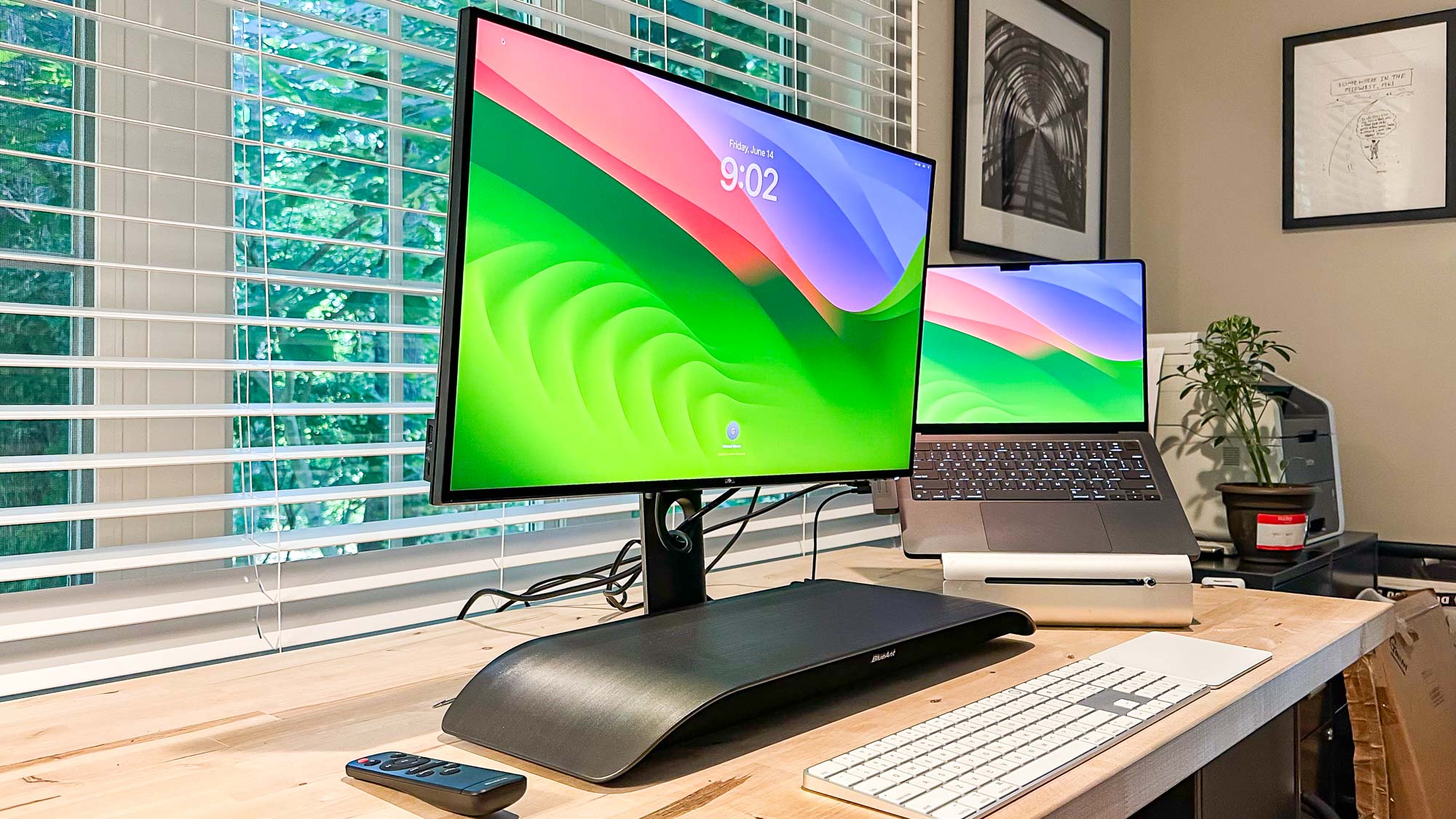
- Eye-catching design
- Soundbase design equals a large footprint
I haven’t seen a speaker quite like this before. The 23 x 8.58 x 2.13-inch unit combines the width of a small soundbar with the depth of a soundbase. The two 0.8 x 3.3-inch drivers and woofer are encased in a modern-looking plastic shell. Two bass ports on the back of the unit are intended to enhance the low end.
The Soundblade speaker is designed to go under your monitor but you’re not supposed to put the monitor on top of it. Given its width and depth, the Soundblade claims quite a bit of real estate on your desk. I had to push my laptop stand aside a couple of inches to make room for it.
You can put objects on top without affecting the sound and it's rated to hold up to 66 pounds.
The speaker comes with small risers you can add to the feet to lift the unit if it doesn’t clear your monitor stand.
BlueAnt Soundblade review: Controls and connectivity
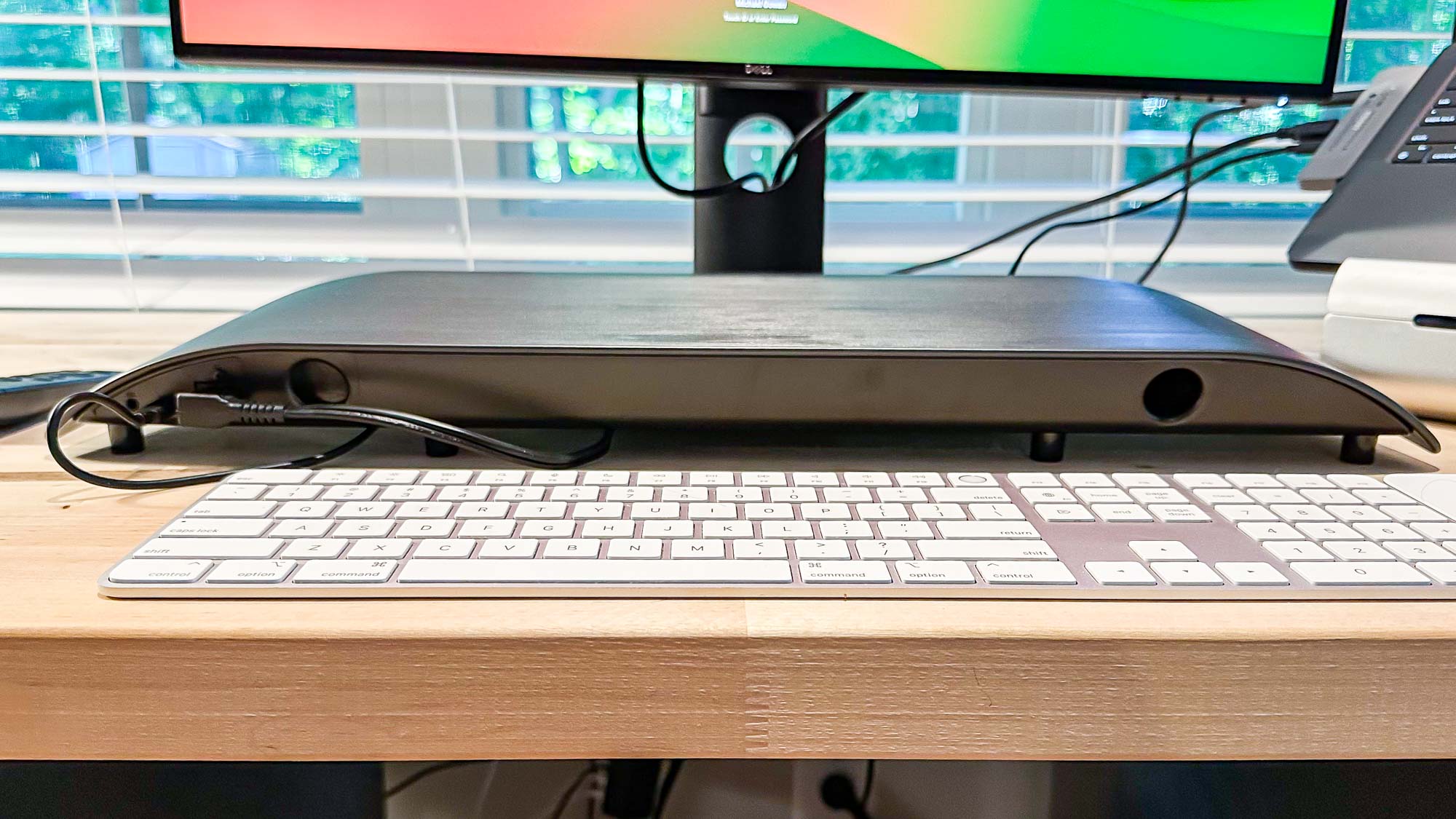
- Useful connectivity and controls
- No way to turn off voice prompts when selecting sources
The speaker’s minimalist design extends to its controls: on the right side, you’ll find touch-sensitive areas for adjusting the volume and changing the input. You can connect by Bluetooth, USB-C or 3.5mm auxiliary.
The speaker comes with a remote for additional control, which could be useful if you’re watching a movie and aren’t right next to the speaker. In addition to mirroring the controls on the speaker, the remote adds the ability to play, pause, skip or rewind.
The remote also lets you pick among three sound modes: game, which has a brighter and bassier sound; movie, for more bass and vocals and a wider sound; and music, which balances vocals and bass. Unlike many speakers, each mode definitely affects the sound you hear.
When you switch sources or sound modes, a voice announces the change. I found the voice to be loud and unnecessary. Disappointingly, you can't turn it off.
BlueAnt Soundblade review: Sound quality
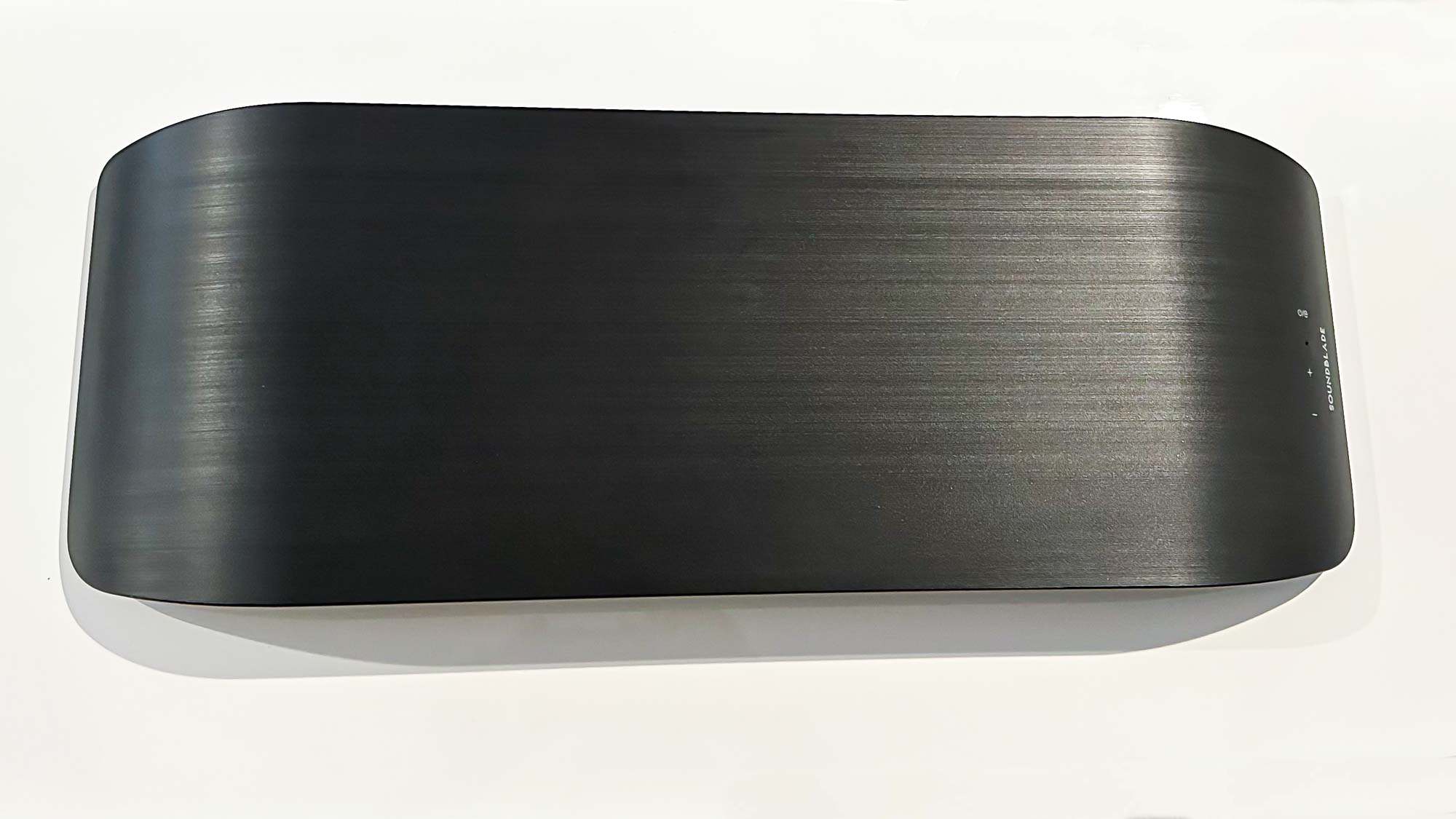
- Wide sound and clear voices
- Decent bass without a separate subwoofer
Overall, the Soundblade produces good sound. It shines when reproducing voices, whether in movies or music, and the built-in subwoofer produces more low-end than you might expect given its slim dimensions.
In Movie sound mode, the speaker makes voices easy to hear. When Paul calls out the emperor in Dune: Part 2, the emperor’s whispered threats were clear (as were Paul’s shouts). When the worms attack the Sardaukar, the rumble the speaker produced added to the drama — though it wasn’t as much low-end as you’d get from the likes of the Klipsch ProMedia 2.1 THX desktop speaker system with a dedicated subwoofer. The Soundblade spread sound beyond the edges of the screen during the fight between Mae and Master Indara in the first episode of the Alcolyte.
Since it's a soundbar, it makes sense that the Soundblade performs better for movies and games than for music. Listening to St. Vincent’s “Broken Man” in Music sound mode, her voice is prominent in the mix, but the drums and bass lacked oomph while the guitars were missing bite; JBL’s 104-BT had much better crispness than the Soundblade. Similarly, Billie Eilish’s voice had good depth on “Birds of a Feather,” but the instruments sounded flat. The bass on Kenrick Lamar’s “Not Like Us” had some presence but not as much as I wanted.
The Soundblade got plenty loud to fill my office, measuring more than 95dB (decibels) at max volume. But the vocals distorted at that volume; it’s much more pleasant sounding at around 80dB.
BlueAnt Soundblade review: Verdict
The BlueAnt Soundblade is an interesting option for sound at your desk. It works best for movies and games, especially making voices easy to understand — which also translates well to video calls. The built-in subwoofer renders more bass than a typical desktop speaker system without a subwoofer.
The Soundblade doesn’t sound as good when listening to music as some less expensive, more traditional desktop speakers, such as the JBL 104-BT. It also doesn’t perform as well as a traditional small soundbar, such as the Sonos Beam, but you have to pay twice as much for the Beam.
The design may be what seals it for you. If you’re looking for an eye-catching centerpiece for your desk, the Soundblade could be a good match — just make sure you have the space to accommodate its footprint.

Michael Gowan is a freelance technology journalist covering soundbars, TVs, and wireless speakers of all kinds of shapes and sizes for Tom’s Guide. He has written hundreds of product reviews, focusing on sound quality and value to help shoppers make informed buying decisions. Micheal has written about music and consumer technology for more than 25 years. His work has appeared in publications including CNN, Wired, Men’s Journal, PC World and Macworld. When Michael’s not reviewing speakers, he’s probably listening to one anyway.
